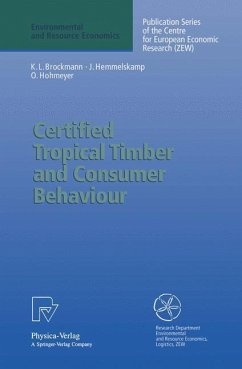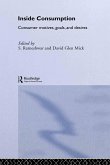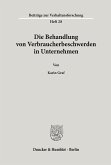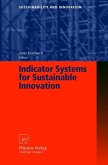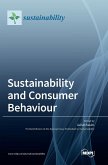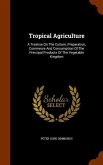Karl L. Brockmann, Jens Hemmelskamp, Olav Hohmeyer
Certified Tropical Timber and Consumer Behaviour
The Impact of a Certification Scheme for Tropical Timber from Sustainable Forest Management on German Demand
Karl L. Brockmann, Jens Hemmelskamp, Olav Hohmeyer
Certified Tropical Timber and Consumer Behaviour
The Impact of a Certification Scheme for Tropical Timber from Sustainable Forest Management on German Demand
- Broschiertes Buch
- Merkliste
- Auf die Merkliste
- Bewerten Bewerten
- Teilen
- Produkt teilen
- Produkterinnerung
- Produkterinnerung
Boycotting tropical timber reduces its economic value and provides an incentive to burn down forests, making them available for subsequent agricultural use or livestock farming. In contrast, a certification scheme for sustainably produced timber (tropical or non-tropical) protects the forests by raising their economic value. Examined here the impact of a certification scheme on German demand for tropical timber. A partial-equilibrium model is developed for the German tropical timber market as a whole as well as for five important submarkets representing 50% of the total demand. The results…mehr
Andere Kunden interessierten sich auch für
![Inside Consumption Inside Consumption]() S. Ratneshwar / David Glen Mick (eds.)Inside Consumption206,99 €
S. Ratneshwar / David Glen Mick (eds.)Inside Consumption206,99 €![Die Behandlung von Verbraucherbeschwerden in Unternehmen. Die Behandlung von Verbraucherbeschwerden in Unternehmen.]() Karin GrafDie Behandlung von Verbraucherbeschwerden in Unternehmen.59,90 €
Karin GrafDie Behandlung von Verbraucherbeschwerden in Unternehmen.59,90 €![Indicator Systems for Sustainable Innovation Indicator Systems for Sustainable Innovation]() Jens Horbach (ed.)Indicator Systems for Sustainable Innovation77,99 €
Jens Horbach (ed.)Indicator Systems for Sustainable Innovation77,99 €![Predictably Irrational Predictably Irrational]() Dan ArielyPredictably Irrational11,99 €
Dan ArielyPredictably Irrational11,99 €![International environmental protection International environmental protection]() Guillaume NdayikengurutseInternational environmental protection18,99 €
Guillaume NdayikengurutseInternational environmental protection18,99 €![Sustainability and Consumer Behaviour Sustainability and Consumer Behaviour]() Sustainability and Consumer Behaviour87,99 €
Sustainability and Consumer Behaviour87,99 €![Tropical Agriculture Tropical Agriculture]() Peter Lund SimmondsTropical Agriculture40,99 €
Peter Lund SimmondsTropical Agriculture40,99 €-
-
-
Boycotting tropical timber reduces its economic value and provides an incentive to burn down forests, making them available for subsequent agricultural use or livestock farming. In contrast, a certification scheme for sustainably produced timber (tropical or non-tropical) protects the forests by raising their economic value. Examined here the impact of a certification scheme on German demand for tropical timber. A partial-equilibrium model is developed for the German tropical timber market as a whole as well as for five important submarkets representing 50% of the total demand. The results reveal that a credible certification scheme can induce a significant expansion of demand for sustainably produced tropical timber. This holds true for a scheme restricted to Germany as well as for an OECD-wide approach.
Hinweis: Dieser Artikel kann nur an eine deutsche Lieferadresse ausgeliefert werden.
Hinweis: Dieser Artikel kann nur an eine deutsche Lieferadresse ausgeliefert werden.
Produktdetails
- Produktdetails
- Environmental and Resource Economics
- Verlag: Physica-Verlag
- 1996
- Seitenzahl: 196
- Erscheinungstermin: 10. Juli 1996
- Englisch
- Abmessung: 235mm x 155mm x 11mm
- Gewicht: 306g
- ISBN-13: 9783790809558
- ISBN-10: 3790809551
- Artikelnr.: 25028357
- Herstellerkennzeichnung
- Physica Verlag
- Tiergartenstr. 17
- 69121 Heidelberg
- ProductSafety@springernature.com
- Environmental and Resource Economics
- Verlag: Physica-Verlag
- 1996
- Seitenzahl: 196
- Erscheinungstermin: 10. Juli 1996
- Englisch
- Abmessung: 235mm x 155mm x 11mm
- Gewicht: 306g
- ISBN-13: 9783790809558
- ISBN-10: 3790809551
- Artikelnr.: 25028357
- Herstellerkennzeichnung
- Physica Verlag
- Tiergartenstr. 17
- 69121 Heidelberg
- ProductSafety@springernature.com
1 Introduction.- I: General Conditions for Tropical Timber Certification.- 2 Concepts of Sustainability and the Design of a Certification Scheme for Tropical Timber.- 3 Effectiveness and Efficiency of a Certification Scheme Aimed at Protecting Tropical Rain Forests.- 4 Certification and Tropical Timber Supply.- 5 Environmental Labels and Consumer Behaviour.- 5.1 The Distribution of Environmental Labels.- 5.2 Factors Influencing Environmentally Conscious Consumer Behaviour.- 5.3 Studies Concerning the Blue Angel.- 5.4 Case Study: Low Pollution Emulsion Lacquer Paints.- 5.5 Implications for a Certification of Tropical Timber.- II: Basic Scenarios for a Certified Tropical Timber Market in the Federal Republic of Germany.- 6 Definitions, Database and Data Processing.- 7 Distribution of Tropical Timber in the Federal Republic of Germany.- 7.1 Tropical Timber Imports and Exports.- 7.2 Processing of Tropical Timber in the German Timber Industry.- 7.3 Final Consumption of Tropical Timber.- 7.4 Distribution of Tropical Timber in 1984.- 8 Trend Analysis and Basic Scenarios.- 8.1 Procedure for Determining the Basic Scenarios.- 8.2 General Development in the German Tropical Timber Market.- 8.3 Trend Analysis and Basic Scenarios in Individual Submarkets.- 8.3.1 Windows.- 8.3.2 Outer Doors.- 8.3.3 Staircases.- 8.3.4 Do-It-Yourself Mouldings.- 8.3.5 Wall and Ceiling Coverings.- 8.3.6 Furniture Surfaces.- 8.3.7 Inner Doors.- 8.3.8 Summary of the Basic Scenarios.- III: Extended Scenarios for a Certified Tropical Timber Market under Different Supply and Demand Constellations.- 9 Theoretical Foundations.- 9.1 Determining the Market Equilibrium on a Certified Tropical Timber Market.- 9.1.1 Market Equilibrium with OECD-wide Certification.- 9.1.2 Market Equilibrium for a Certification Scheme Confined to the Federal Republic of Germany.- 9.2 Theoretical Description of the Supply Function with Increased Costs and the Demand Function with Increased Willingness to Pay.- 9.3 Determining the Price Elasticity of Demand in the Submarkets.- 9.4 Selection of the Supply, Demand and Substitution Elasticities.- 10 Extended Scenarios for Individual Submarkets.- 10.1 Windows.- 10.2 Outer Doors.- 10.3 Staircases.- 10.4 Do-It-Yourself Mouldings.- 10.5 Furniture Surfaces.- 11 Extended Scenarios of the Aggregate Timber Market.- 11.1 Extended Scenarios of the Aggregate Tropical Timber Market.- 11.2 Tropical Timber Certification and the Demand for Non-Tropical Timber.- 12 Conclusions.- A1 Procedure for Evaluating the Foreign Trade Statistics.- A2 Production Quantities and Values of Lacquer of German Production.- A3 List of Goods Categories in the Foreign Trade Statistics as Information Source for Tropical Timber.- A4 Net Imports of Tropical Timber into the Federal Republic of Germany.- A5 Conversion Factors for Evaluating the Foreign Trade Statistics.- A6 Recovery Rates.- A7 Domestic Final Consumption of Tropical Timber in the Federal Republic of Germany in 1984.- A8 Half-Finished Tropical Timber Products: Chief Uses and Substitutes.- A9 Finished Timber Products on the German Market Containing No or Negligible Tropical Timber from Natural Forests.- A10 Graphic Depiction of a Contracting or Expanding Demand.- A11 Determining the Reaction Directions of the Derived Demand.- Summary.
1 Introduction.- I: General Conditions for Tropical Timber Certification.- 2 Concepts of Sustainability and the Design of a Certification Scheme for Tropical Timber.- 3 Effectiveness and Efficiency of a Certification Scheme Aimed at Protecting Tropical Rain Forests.- 4 Certification and Tropical Timber Supply.- 5 Environmental Labels and Consumer Behaviour.- 5.1 The Distribution of Environmental Labels.- 5.2 Factors Influencing Environmentally Conscious Consumer Behaviour.- 5.3 Studies Concerning the Blue Angel.- 5.4 Case Study: Low Pollution Emulsion Lacquer Paints.- 5.5 Implications for a Certification of Tropical Timber.- II: Basic Scenarios for a Certified Tropical Timber Market in the Federal Republic of Germany.- 6 Definitions, Database and Data Processing.- 7 Distribution of Tropical Timber in the Federal Republic of Germany.- 7.1 Tropical Timber Imports and Exports.- 7.2 Processing of Tropical Timber in the German Timber Industry.- 7.3 Final Consumption of Tropical Timber.- 7.4 Distribution of Tropical Timber in 1984.- 8 Trend Analysis and Basic Scenarios.- 8.1 Procedure for Determining the Basic Scenarios.- 8.2 General Development in the German Tropical Timber Market.- 8.3 Trend Analysis and Basic Scenarios in Individual Submarkets.- 8.3.1 Windows.- 8.3.2 Outer Doors.- 8.3.3 Staircases.- 8.3.4 Do-It-Yourself Mouldings.- 8.3.5 Wall and Ceiling Coverings.- 8.3.6 Furniture Surfaces.- 8.3.7 Inner Doors.- 8.3.8 Summary of the Basic Scenarios.- III: Extended Scenarios for a Certified Tropical Timber Market under Different Supply and Demand Constellations.- 9 Theoretical Foundations.- 9.1 Determining the Market Equilibrium on a Certified Tropical Timber Market.- 9.1.1 Market Equilibrium with OECD-wide Certification.- 9.1.2 Market Equilibrium for a Certification Scheme Confined to the Federal Republic of Germany.- 9.2 Theoretical Description of the Supply Function with Increased Costs and the Demand Function with Increased Willingness to Pay.- 9.3 Determining the Price Elasticity of Demand in the Submarkets.- 9.4 Selection of the Supply, Demand and Substitution Elasticities.- 10 Extended Scenarios for Individual Submarkets.- 10.1 Windows.- 10.2 Outer Doors.- 10.3 Staircases.- 10.4 Do-It-Yourself Mouldings.- 10.5 Furniture Surfaces.- 11 Extended Scenarios of the Aggregate Timber Market.- 11.1 Extended Scenarios of the Aggregate Tropical Timber Market.- 11.2 Tropical Timber Certification and the Demand for Non-Tropical Timber.- 12 Conclusions.- A1 Procedure for Evaluating the Foreign Trade Statistics.- A2 Production Quantities and Values of Lacquer of German Production.- A3 List of Goods Categories in the Foreign Trade Statistics as Information Source for Tropical Timber.- A4 Net Imports of Tropical Timber into the Federal Republic of Germany.- A5 Conversion Factors for Evaluating the Foreign Trade Statistics.- A6 Recovery Rates.- A7 Domestic Final Consumption of Tropical Timber in the Federal Republic of Germany in 1984.- A8 Half-Finished Tropical Timber Products: Chief Uses and Substitutes.- A9 Finished Timber Products on the German Market Containing No or Negligible Tropical Timber from Natural Forests.- A10 Graphic Depiction of a Contracting or Expanding Demand.- A11 Determining the Reaction Directions of the Derived Demand.- Summary.

